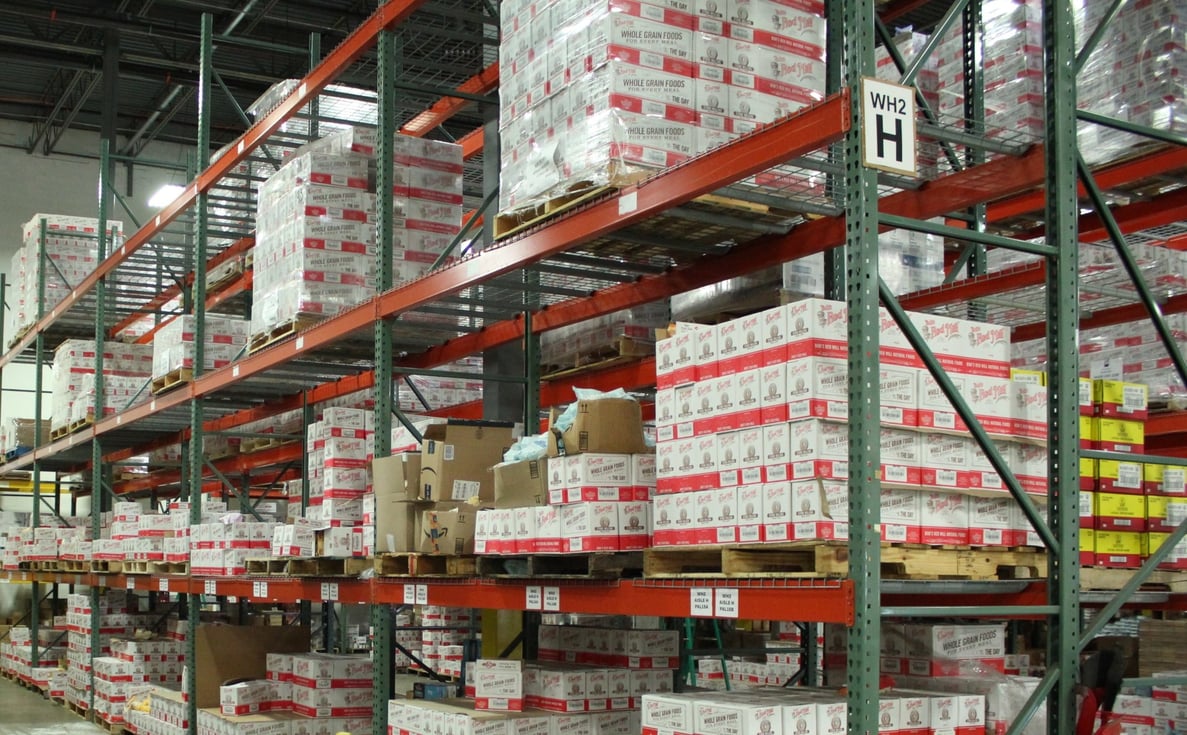Many online retailers have been weathering a proverbial perfect storm. Unceasing consumer demand combined with supply chain problems and labor shortages have forced merchants to rethink, and retool, their entire strategies for competing in eCommerce.
With inflation and the risk of an economic slowdown added to the mix, businesses must look at every option available to streamline processes, increase efficiency, and cut costs. And, oftentimes, opportunities to do all of the above exist within the confines of the warehouse.
Why?
Because in an industry completely dependent on technology, a great deal of businesses still adhere to traditional methods of warehouse management.
At SkuNexus, we design management software solutions to address the myriad of issues faced by companies across the realm of eCommerce. And, while each situation is different, a key fundamental is frequently the same — operations that can be automated by a warehouse management system (WMS) are still being performed manually. Human error inevitably follows.
Let’s take a look at 5 Warehouse Management System FAQs and discuss the powerful ways a WMS can solve problems, save money, and transform your eCommerce business.

1. What is a Warehouse Management System?
A warehouse management system is a software platform that helps companies control, direct, and optimize their warehouse operations by automating processes and coordinating staff, equipment, inventory, and orders.
The WMS can provide oversight of the full range of warehouse activity, from scheduling loading dock receiving to the accurate putaway of items into storage to the precise amount of packing materials required for a given product.
Thanks to its flexibility, a WMS can be provided as part of an ERP system or as a standalone product which may be be cloud-based or on-premises.
2. What are Some Examples of What a WMS Can Do?
Particularly when combined with order and inventory management systems, a WMS can be thought of as the mothership for your backend operations.
For example, it can -
- Optimize Warehouse Space: By creating a layout plan based on the size of the warehouse and the characteristics of the inventory, the WMS can help businesses use their warehouse space more efficiently and store inventory in the most appropriate locations.
- Improve Resource Planning: By taking into account current orders and available staff, a WMS can help businesses optimize their daily schedule. It can create cost effective work assignments, estimate labor costs, and connect with transportation providers to coordinate shipping operations.
- Provide Inventory Tracking: With the use of barcode scanners, a WMS can track the movement of inventory within the warehouse. Items may be scanned at any/every point of their journey - as they are received, stored, picked, packed, and shipped, and the WMS will update inventory levels in real-time. This is a key component of disciplined inventory control.
- Direct Efficient Order Processing: A WMS can help businesses fulfill orders quickly and accurately. During order picking, employees can receive highly-detailed instructions on not only where items are located, but also the optimal route to take to locate them. At packing, critical order information can be issued to ensure proper materials are used and in the correct quantities.
- Make Data-Driven Decisions: By monitoring warehouse operations and tracking employee adherence to standard operating procedures, the WMS can identify any issues that need to be addressed. In addition, the system can collect information on a plethora of KPIs, from Time to Receive to Putaway Accuracy to Rate of Customer Returns, and everything in between.

3. Are There Different Types of Warehouse Management Systems?
Yes. A range exists, and many systems have a combination of the attributes listed below. It should be noted that even small warehouse management software can have powerful, transformative functionality.
- Basic WMS: Manages elemental warehouse operations — receiving and putaway, order picking and packing, and shipping.
- Advanced WMS: This type of system builds upon a basic WMS with real-time tracking of inventory and advanced order routing capabilities.
- Integrated WMS: Integrates with other systems, such as enterprise resource planning (ERP) and transportation management systems (TMS), to provide a more comprehensive view of warehouse operations.
- Standalone On-Premises WMS: An on-premises WMS operates on a company's own servers and may require custom integration with other business systems. Implementation can take longer compared to other types of WMS.
- Cloud-based WMS: A cloud WMS is a web-based software service accessed over the internet. Generally easier and faster to implement, Cloud WMS solutions can be customized to fit the needs and processes of a company. They can also be integrated with cloud-based ERP systems and other warehouse technology if need be (mobile devices, conveyor belts, sorting machines, etc.)
- Mobile WMS: This type of system includes mobile apps or other mobile interfaces that allow warehouse workers to access and update the WMS using handheld devices.

4. Does a WMS Integrate with Other Systems?
An essential element of management software is free-flowing data between different platforms, and a warehouse management system can integrate with a variety of other systems to improve efficiency and accuracy in the warehouse. Here are some examples of other system types, how a WMS integrates with them, and what that integration can yield:
- Enterprise Resource Planning (ERP) Systems: A WMS shares data and facilitates the flow of information between the warehouse and other departments within the organization, (e.g. sales, finance, procurement, etc.)
- Transportation Management Systems (TMS): A WMS can integrate with a TMS to coordinate the movement of goods between the warehouse and other locations (distribution centers, stores, and customers).
- Customer Relationship Management (CRM) Systems: A CRM system can provide customer information, such as order history and delivery preferences, to warehouse staff.
- Supply Chain Execution (SCE) Systems: WMS and SCE systems share data to manage the flow of goods between the warehouse and other links in the supply chain.
5. What are the Main Benefits of Implementing a WMS?
The benefits of WMS implementation are immense, from cost savings to improved fulfillment and satisfied customers.
- Cost and Waste Reduction: Waste can be minimized and costs can be reduced by improving warehouse space, inventory, and labor management.
- Better Data Management: A warehouse management system can use data analytics to identify inefficiencies and bottlenecks in processes such as receiving inventory, picking, packing, and shipping.
- Improved Productivity: By implementing simple, efficient practices for tasks like putaway, picking, and packing, human error can be reduced and time spent walking around the warehouse can be decreased.
- Tighter Inventory Control: Real-time tracking of materials using lot and batch numbers allows for visibility into the location of products.
- Operational Efficiency: Better Communication with suppliers and transportation services can help to coordinate inbound and outbound operations and increase efficiency.
- Enhanced Customer Service: By tracking orders, shipments, and deliveries in real-time, the WMS helps provide vastly better customer service.
A broad array of WMS applications are available in the marketplace, and merchants must perform due diligence to find the best fit for their specific needs. When choosing a WMS, it is important to consider not just how the software will address current challenges, but also how it will adapt as your business evolves.
At SkuNexus, we design comprehensive management software systems for both online retailers and fulfillment solution providers. Our software is built for maximum flexibility, customization, and ease of use.
If you would like to read more of our ongoing insights, please subscribe to our blog.
If you would like a closer look at how SkuNexus works, please schedule a demo.








